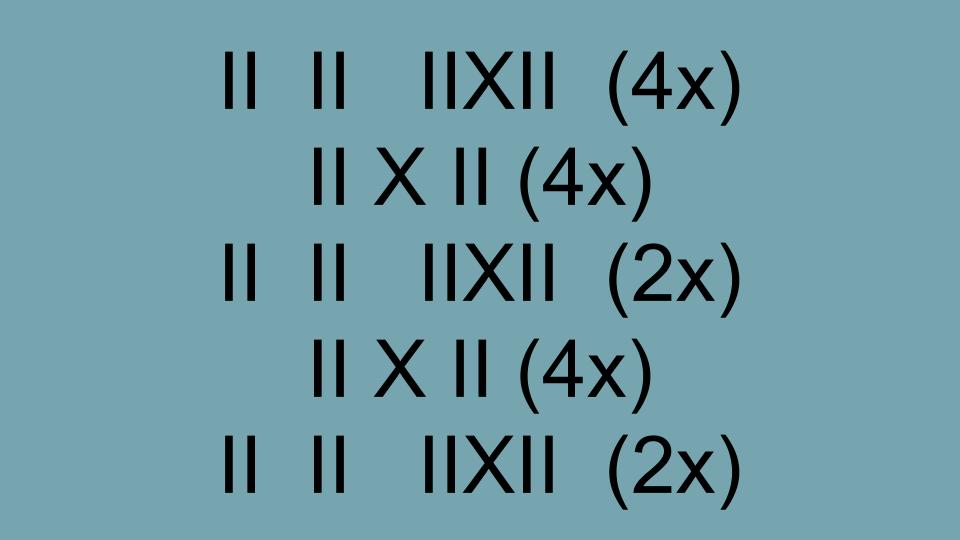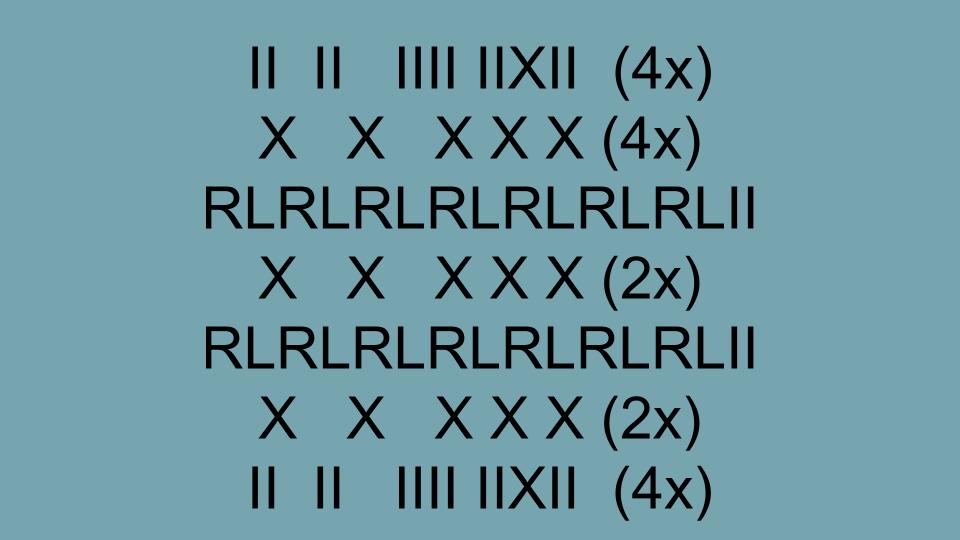DO!
Simple Gifts (with sticks and motions)
Use this rhythm to clap along with the first part of Mozart's Rondo Alla Turca (Turkish March). We will learn the next part in our next class...
Utilice este ritmo para aplaudir junto con la primera parte del Rondo Alla Turca de Mozart (marcha turca). Aprenderemos la siguiente parte en nuestra próxima clase ...
Mozart’s full name is usually written “Wolfgang Amadeus Mozart,” but that’s not what Mozart called himself. His father baptized him Johannes Chrysotomus Wolfgangus Theophilus Mozart. He enjoyed decorating and twisting his various names into words like Wolfie, Wolfgango, Gangflow (that’s Wolfgang spelled backwards), Mozartini, Mozartus, and Mozarty. Remember, this guy loved to play around! But he virtually never used the name “Amadeus.” So where did “Amadeus” come from? The answer is easy if you know ancient Greek and Latin (as Mozart did): Amadeus is Latin for the Greek word Theophilus, which means “lover of God.” However, Mozart used variants of the Latin word, turning it into Amadeo, Amadè, or most often, Amadé.
El nombre completo de Mozart suele escribirse "Wolfgang Amadeus Mozart", pero
eso no es lo que Mozart se llama a sí mismo. Su padre lo bautizó Johannes
Chrysotomus Wolfgangus Theophilus Mozart. Le gustaba decorar y
torciendo sus varios nombres en palabras como Wolfie, Wolfgango, Gangflow
(eso es Wolfgang escrito al revés), Mozartini, Mozartus y Mozarty.
Recuerda, ¡a este chico le encantaba jugar! Pero virtualmente nunca usó el
nombre "Amadeus". Entonces, ¿de dónde vino “Amadeus”? La respuesta es
fácil si sabes griego antiguo y latín (como hizo Mozart): Amadeus es
Latín para la palabra griega Theophilus, que significa "amante de Dios".
Sin embargo, Mozart usó variantes de la palabra latina, convirtiéndola en Amadeo,
Amadè, o más a menudo, Amadé.
eso no es lo que Mozart se llama a sí mismo. Su padre lo bautizó Johannes
Chrysotomus Wolfgangus Theophilus Mozart. Le gustaba decorar y
torciendo sus varios nombres en palabras como Wolfie, Wolfgango, Gangflow
(eso es Wolfgang escrito al revés), Mozartini, Mozartus y Mozarty.
Recuerda, ¡a este chico le encantaba jugar! Pero virtualmente nunca usó el
nombre "Amadeus". Entonces, ¿de dónde vino “Amadeus”? La respuesta es
fácil si sabes griego antiguo y latín (como hizo Mozart): Amadeus es
Latín para la palabra griega Theophilus, que significa "amante de Dios".
Sin embargo, Mozart usó variantes de la palabra latina, convirtiéndola en Amadeo,
Amadè, o más a menudo, Amadé.
TRY THIS!
|
1. ¿Escribe tu nombre al revés e intenta decirlo en voz alta?
2. ¿Cuántas palabras puedes formar con su nombre? (Puede usar solo su nombre o nombre y apellido) 3. Mozart se dio a sí mismo al menos 3 apodos que conocemos. Usando su nombre real, intente crear 3 nuevos nombres para usted. Pruébelos con el nombre de un familiar o amigo. |
Mozart wrote these letters when he was a young teenager. He was on tour in Italy with his father and it was the first time he had traveled without his mother and his sister, Nannerl. Don’t forget that when Mozart traveled he was gone for months if not years at a time, and there were no phones, faxes, or e‐mails for keeping in touch. He was obviously homesick.
Mozart escribió estas cartas cuando era un joven adolescente. Estaba de gira por Italia con su padre y era la primera vez que viajaba sin su madre y su hermana, Nannerl. No olvide que cuando Mozart viajaba, se ausentaba durante meses, si no años, y no había teléfonos, faxes ni correos electrónicos para mantenerse en contacto. Era obvio que extrañaba su hogar.
|
Nannerl,
I beg you to send me a letter every post-day, even if you have nothing to write about. I should like to have one merely order to receive some letter every time the post comes in... |
Mama,
I beg you to pray for me, that my opera may go well and that we may be happy together again. I kiss Mama’s hand a thousand times and I have many things to say to my sister , but what? If it is God's will, I shall soon, I hope, be able to tell them to her myself. |
Interestingly, at the same time Mozart was writing his letters home to Nannerl and his mother, his father, Leopold, was writing to tell them that Mozart was just fine – “He is fat and cheerful and jolly all day long.” It seems that the way Mozart was acting on the outside was different from the way he was feeling on the inside.
Sometimes, like Mozart, we might be feeling one way on the inside, but we don’t let people know and we show them something different. Use the pdf below to draw a comic strip to describe the situation and use a square bubble to show what you were saying and a cloud bubble to show what you were thinking. Ask a family member to share a time that they felt one way and acted another.
Curiosamente, al mismo tiempo que Mozart escribía sus cartas a Nannerl y su madre, su padre, Leopold, les escribía para decirles que Mozart estaba bien: "Está gordo, alegre y alegre todo el día". Parece que la forma en que Mozart actuaba en el exterior era diferente de la forma en que se sentía en el interior.
A veces, como Mozart, podemos sentirnos de una manera por dentro, pero no se lo dejamos saber a la gente y les mostramos algo diferente. Use el pdf a continuación para dibujar una tira cómica para describir la situación y use una burbuja cuadrada para mostrar lo que estaba diciendo y una burbuja de nube para mostrar lo que estaba pensando. Pídale a un miembro de la familia que comparta un momento en el que se sintió de una manera y actuó de otra.
A veces, como Mozart, podemos sentirnos de una manera por dentro, pero no se lo dejamos saber a la gente y les mostramos algo diferente. Use el pdf a continuación para dibujar una tira cómica para describir la situación y use una burbuja cuadrada para mostrar lo que estaba diciendo y una burbuja de nube para mostrar lo que estaba pensando. Pídale a un miembro de la familia que comparta un momento en el que se sintió de una manera y actuó de otra.
| mozart_comic.pdf | |
| File Size: | 102 kb |
| File Type: | |
Try this song...
(Prueba esta canción ...)
“Great Big House…”
1. Great big house in New Orleans,
Forty stories high,
Every room that I been in
Filled with pumpkin pie.
2. Went down to the old mill stream,
To fetch a pail of water;
Put one arm around my wife,
The other ’round my daughter.
3. Fare thee well, my darling girl,
Fare thee well, my daughter,
Fare thee well, my darling girl,
With the golden slippers on her.
1. Great big house in New Orleans,
Forty stories high,
Every room that I been in
Filled with pumpkin pie.
2. Went down to the old mill stream,
To fetch a pail of water;
Put one arm around my wife,
The other ’round my daughter.
3. Fare thee well, my darling girl,
Fare thee well, my daughter,
Fare thee well, my darling girl,
With the golden slippers on her.
Add these dance steps...
(Agrega estos pasos de baile ...)
|
3 steps forward, clap!
3 steps back, clap! Jump left 2X, Jump right 2X Clap, touch the ground, clap, wait. |
3 pasos adelante, aplaudir!
3 pasos atrás, aplaudir! Saltar 2 veces a la izquierda, 2 veces a la derecha Aplaudir, tocar el suelo, aplaudir, esperar. |


